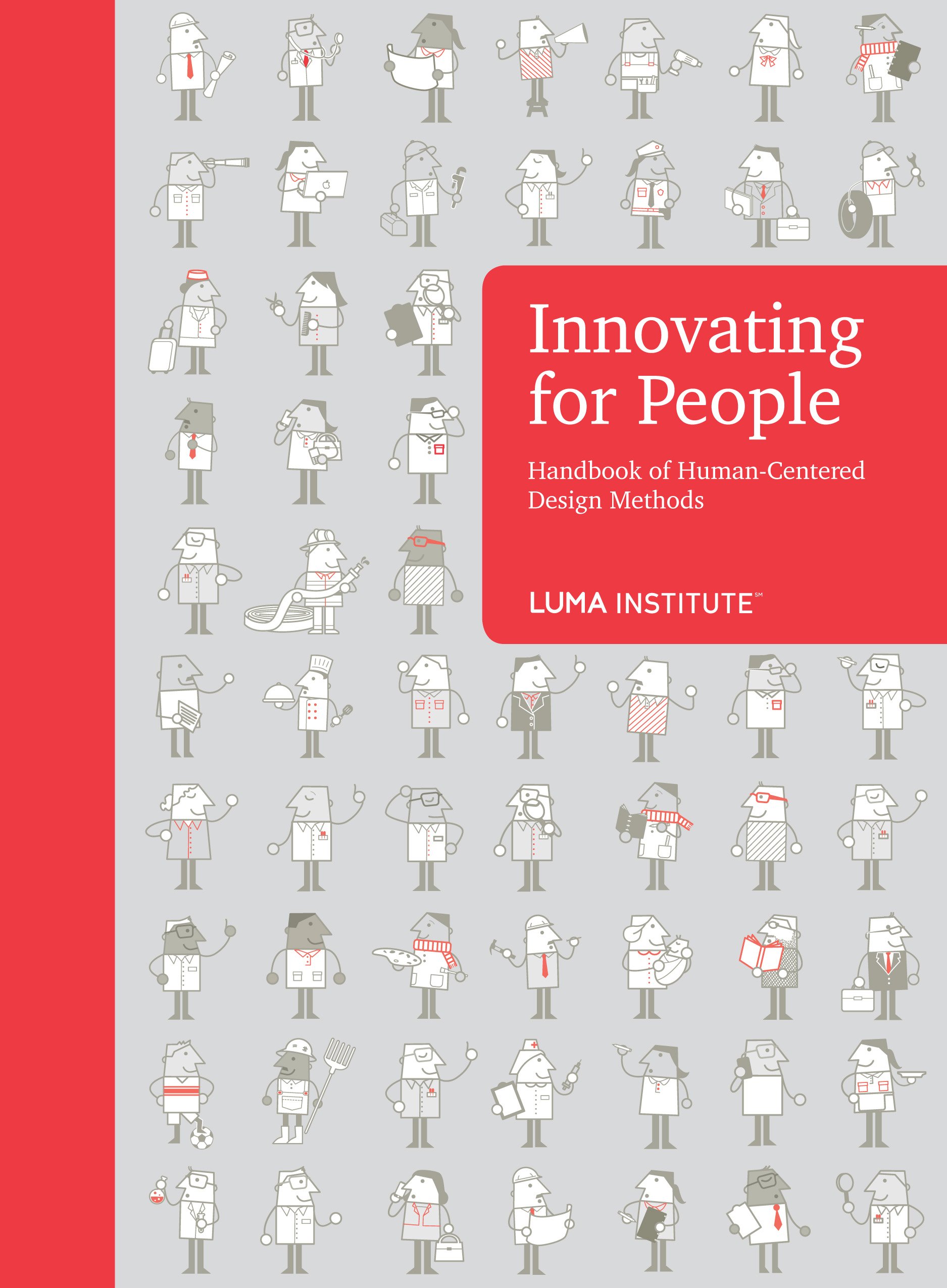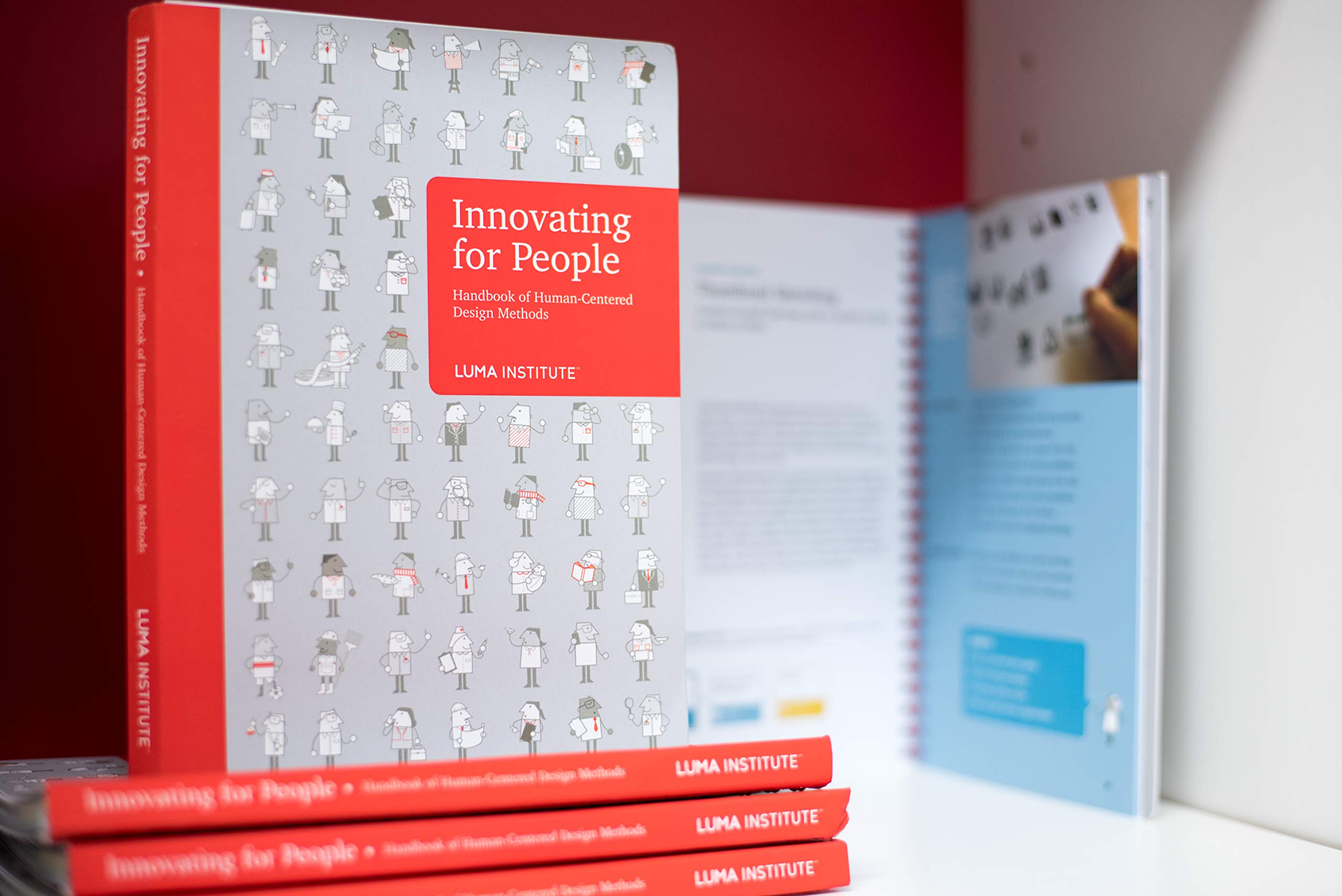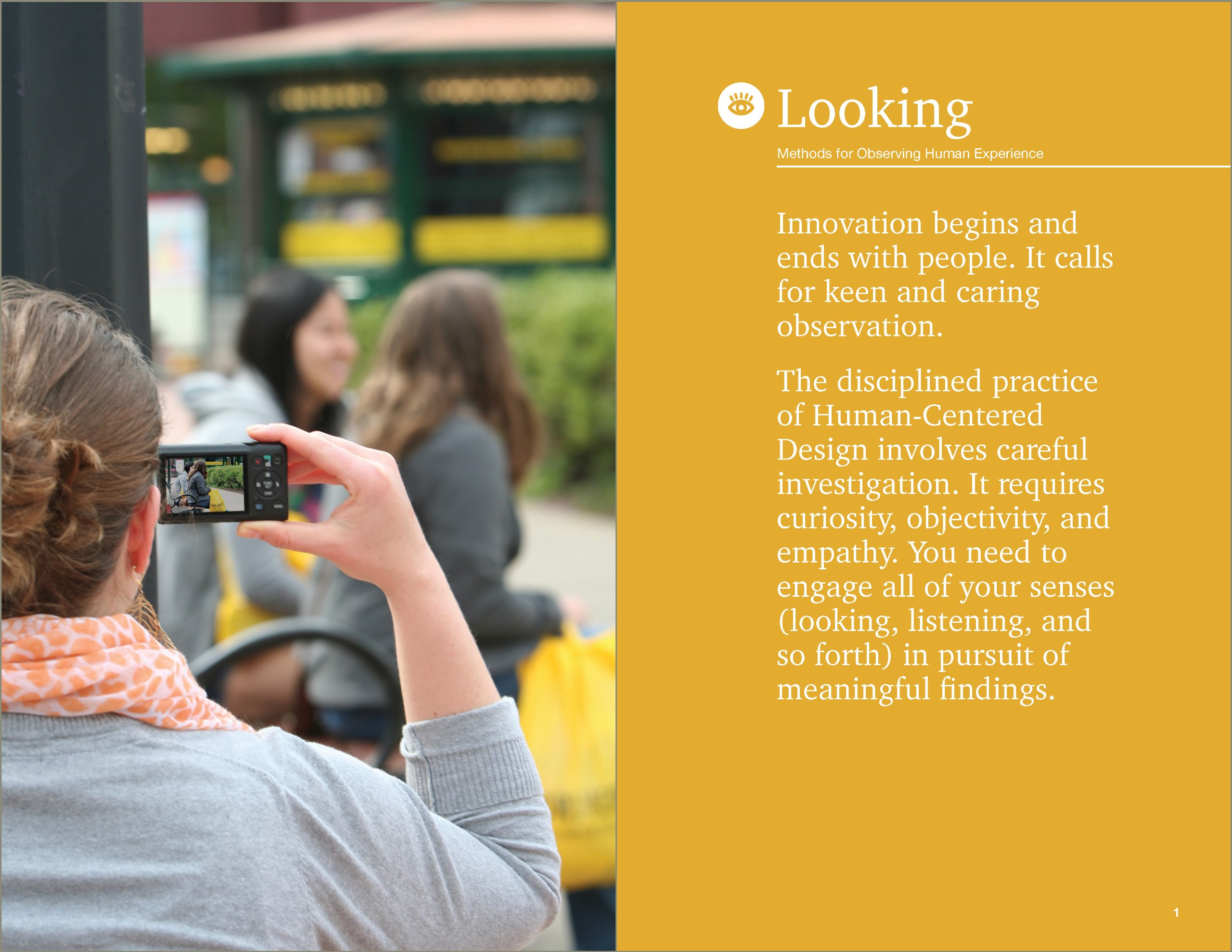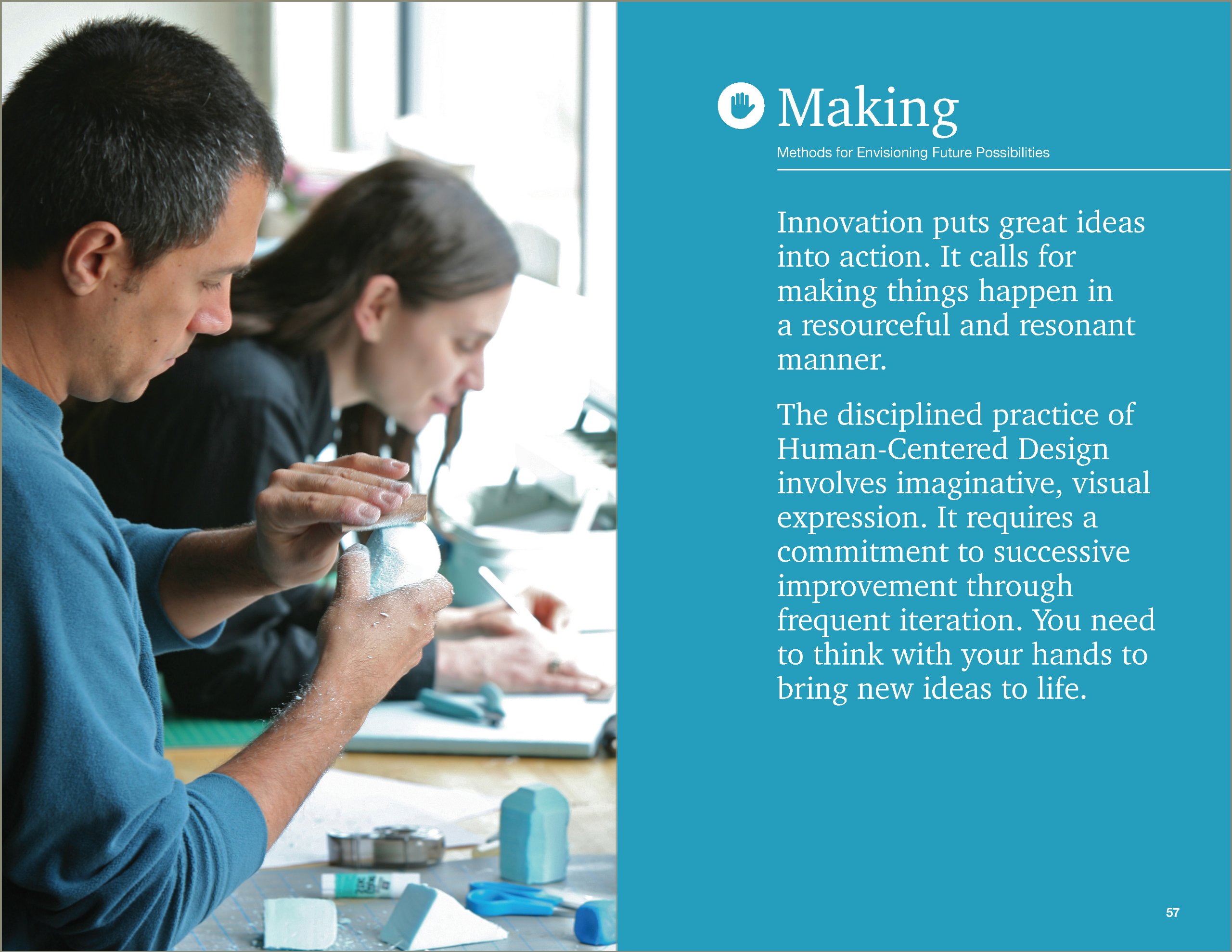









Innovating for People Handbook of Human-Centered Design Methods
B**Y
Concise guidance on ways to perform discovery
I took LUMA training for my job as a product designer, and although you don't NEED a book (all the documentation on LUMA methods is available to subscribers online), I enjoy having this to page through and gain ideas and reinforcement for what I learned in class. Highly recommended.
M**A
Best ux methods handbook
This is a real ux designer handbook which collected all most common methods. To the point, illustrated, each method takes just one page. My favorite part “combination sample” - which is recommendation on how to use methods together. Of course, you can find more explanation and literature for each method, (for some even the whole books), however this book is just awesome to get you familiar with what is out there and help you to identify if you picked the right one, as well as some tips on each method as well. I also like the language and structure: looking, understand, making.
M**A
Designing for Humans? This Book Should be in Your Library
If you want to design better products, innovate with humans in mind, this book is for you. Broken into three subsections: looking, understanding, and making, approaches to human-centered design are clearly laid out in ways that make them easy to understand and implement.So often in design, people get used to using the approaches that they are familiar with, the ones that have given results in the past. But, at the risk of stating the obvious: the quality of the solution is directly related to the quality of the tools used.This book is a catalog of tools: alternative ways of looking, understanding, and making. If you want to avoid getting into a design method rut, flip open the pages of this book and peruse the various approaches to fine-tune the tool to the task at hand.All in all, this book is an excellent resource and should be on every designer's bookshelf.
C**G
Useful overview of some creative design techniques
Innovating for People gives a helpful short guide to a range of techniques useful in design. Each design technique is shown as a easy-to-read double-page spread, giving a brief explanation, bullet points on how the technique works, helpful hints, benefits and an example and photo of the technique in action. The techniques are classified into different categories (looking, understanding and making) and a diagram shows which techniques work well together. Many of the techniques involve generating ideas and sorting and prioritizing them; there are fewer techniques on how to communicate processes. There is just about enough detail to use the technique - more explanation and expanded examples would help. I can see how to adapt some of the techniques to my design work. I feel this book is most useful as material to accompany one of the Luma Institute's courses on Human-Centred Design, but it does work as a stand-alone resource.
L**E
This book is a MUST HAVE for anyone with the desire to really want to know the methods that lead to better design solutions
This book is a MUST HAVE! This book is for anyone who has the desire to bring creativity to the workplace and an engaging approach that will help team members get out of their seat and up to the board embarking on the journey of thinking, collaborating, and innovating. I recently attended the LUMA conference and the audience was filled with product managers, business owners, human resources, marketers, and teachers - and I don't think there was any one person that didn't leave with "hey, I could really use this in my line of work - and what an excellent handbook". For me, as tech lead of a mobile applications group, I got excited over this book. I like the way the book is divided and the visuals. This book gives you the road map with methods to make change.
C**D
A Practical Guide to LUMA's Human-Centered Approach
In a world filled with card-decks, toolkits, and field-guides this resource offers something a little different.Offering thirty-six methods in handbook form, this resource does not present them as a step-by-step guide. In practice, any tool that claims to tell you all that you need to know to implement meaningful design research probably misses the point. Instead, the materials that the LUMA Institute provides offer a way to implement tried and true methods according to their purpose and to frame their application.With each method that is described there is; a "quick guide" for its application, "helpful hints" to highlight the points to be aware of, and noted "benefits" identifying the takeaways that a given tool can provide. The inclusion of "sample combinations" for each method offers a 'recipe' indicating which other methods align well, and in what order they might be combined.A solid resource for those who are taking next steps to implement design research methods, and most importantly, making sense of when to use them.
T**L
Simple Solutions for Complex Problems
LUMA's Innovating for People is a handbook that gets better with age. I purchased this a year ago and have used it in many settings - with students and with adults. I have used it in formal trainings, in conceptualizing an almost million dollar project, as well as in my college classroom. These methods, as a standalone work - but it is through mixing the methods and becoming comfortable that you see the applicability in just about every work situation. For the beginner, if you haven't gone through one of their two-day trainings, this handbook and human centered design as a whole may seem like a difficult concept to grasp - but together with LUMA Workplace you have a match that allows you to tackle many different problems.
C**E
Broad ideas to innovation ideation
The books give very rough idea on how to conduct innovation ideation workshop. Too brief of sequential step approach on these workshop could be very much helpful if comes along with short video link on how each tool can be applied.
E**A
Libro de referencia
Es un toolkit de referencia con varas actividades dependiendo de la fase en la que te encuentres. Recomienda recetas de varias actividades encadenadas unas con otras.No para aprender HCD, pero para principiantes que quieren aplicarlo.
A**S
Excelente Manual!
Es una increíble colección de herramientas de diseño centradas en el usuario, me gustó mucho que cada herramienta además de incluir breve descripción general, descripción de uso paso por paso, ejemplo o caso de estudio también vienen combinaciones sugeridas de uso en conjunto con el resto de las herramientas. Muy bueno!
D**.
Simplest explanation of Design thinking,
Concepts explained with easy to understand graphics. Methodology to collaborate and innovate and generate ideas is phenomenal. Must read for all consultants, problem solvers, project managers and team leaders. Knowledge of powerful tools shared that can harness innovation.
A**R
Quick Refence Guide
You can read this book back to back or pick what is useful. I tend to use this book as a quick reference guide (QRG) for design thinking approach to problem solving.
E**0
There was no satisfaction in any expectation.
Blinding cheaply, it took so long to arrive, and some pages have been folded around the corners. The content is very similar to what you can read on their online website. Since I paid over $100, I expect to receive at least a good quality book cover.
Trustpilot
2 months ago
2 months ago